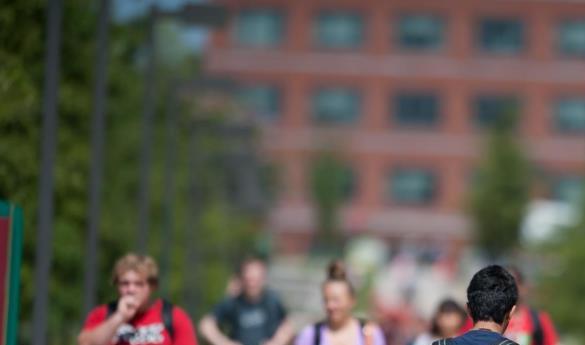OPINION: Students with autism are a crucial part of Mason's diverse population
No one person is truly the same as another. Some people come from small towns with little diversity, while others come from larger communities or more urban environments. Large universities like Mason act as a crossroads of culture: people from all over the world come together with the universal goal of learning.
What makes a population diverse? When people mention diversity, they often mean diversity in race, culture or languages. At Mason, many students learn about other cultures as a result of the plethora of events or activities aimed at engaging students with people of many different backgrounds.
Though it is wonderful to engage with students of different ethnicities and cultures, I believe the word diversity should also be used to describe the situation in which students with disabilities work alongside students without disabilities.For example, students with autism experience college differently than other students. They face many hardships others might not expect. Certain words or actions can more frequently be triggers, leading to unexpected stresses or concerns.
Some students with disabilities experience more challenges of an academic nature than of a social nature. Others might have more physical or psychiatric challenges. Students with autism, on the other hand, experience more challenges in neurological development. These challenges impact them socially, academically and functionally. At the same time, these students may also exhibit abilities others wished they had. The capabilities, strengths or weaknesses of someone with autism can vary greatly.
Cultural factors may also have an effect on people with autism. Students from certain backgrounds may experience difficulty with acceptance of their disability, or with being diagnosed. It might be an internal or external issue, where the person or their family might not acknowledge the disability. In other instances, the student may lack the resources to receive an accurate diagnosis.
Essentially, diversity lies within many different categories—autistic students included. When we think of diversity, we should think outside the box. To truly embrace diversity, we need to embrace and accept all differences.
Students need to embrace all types of diversity in their many different surroundings—both personal and academic. Globalization has led to higher expectations that require people to work together like never before. This cooperation is something we, at Mason, must embrace.
Each person is a part of a greater community. Every country and society is a part of a global world. Diversity exists in many ways, and the cooperation between students with and without autism should not be an exception.
Would you like to respond to this article with a letter to the editor? If so, send an email to opinion@connect2mason.com with the subject line "letter to the editor." Please specify to which article your letter is responding.

